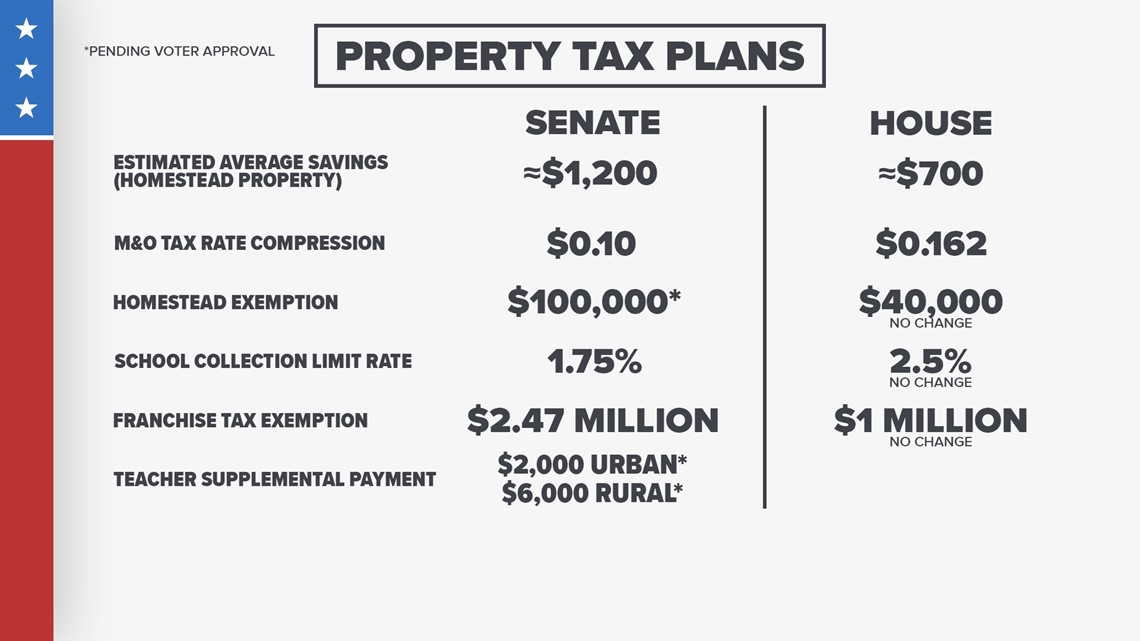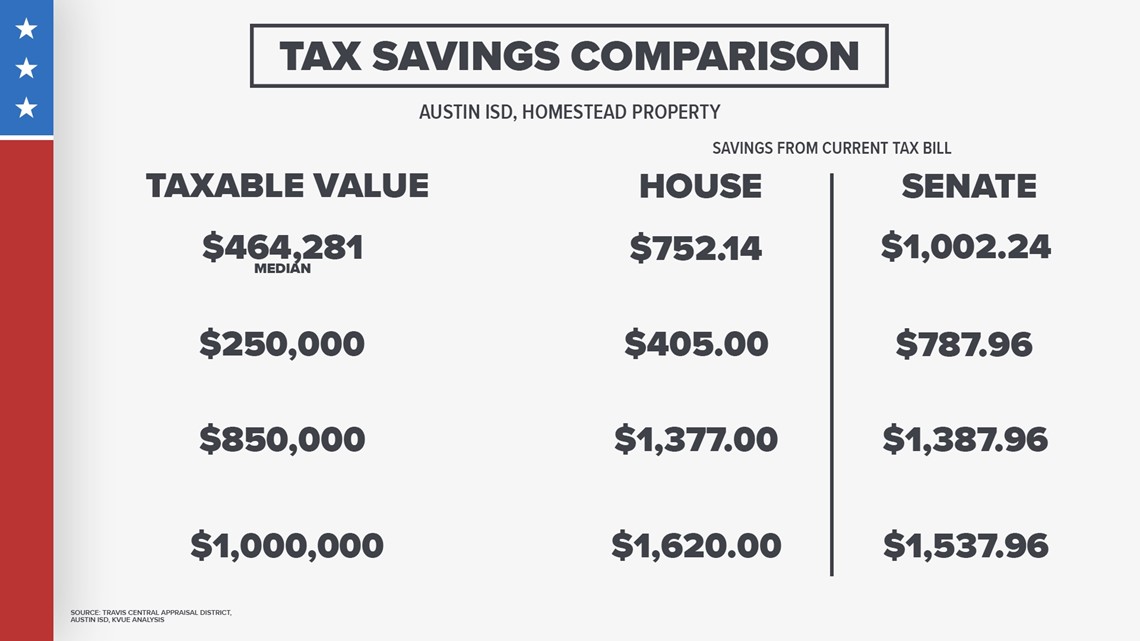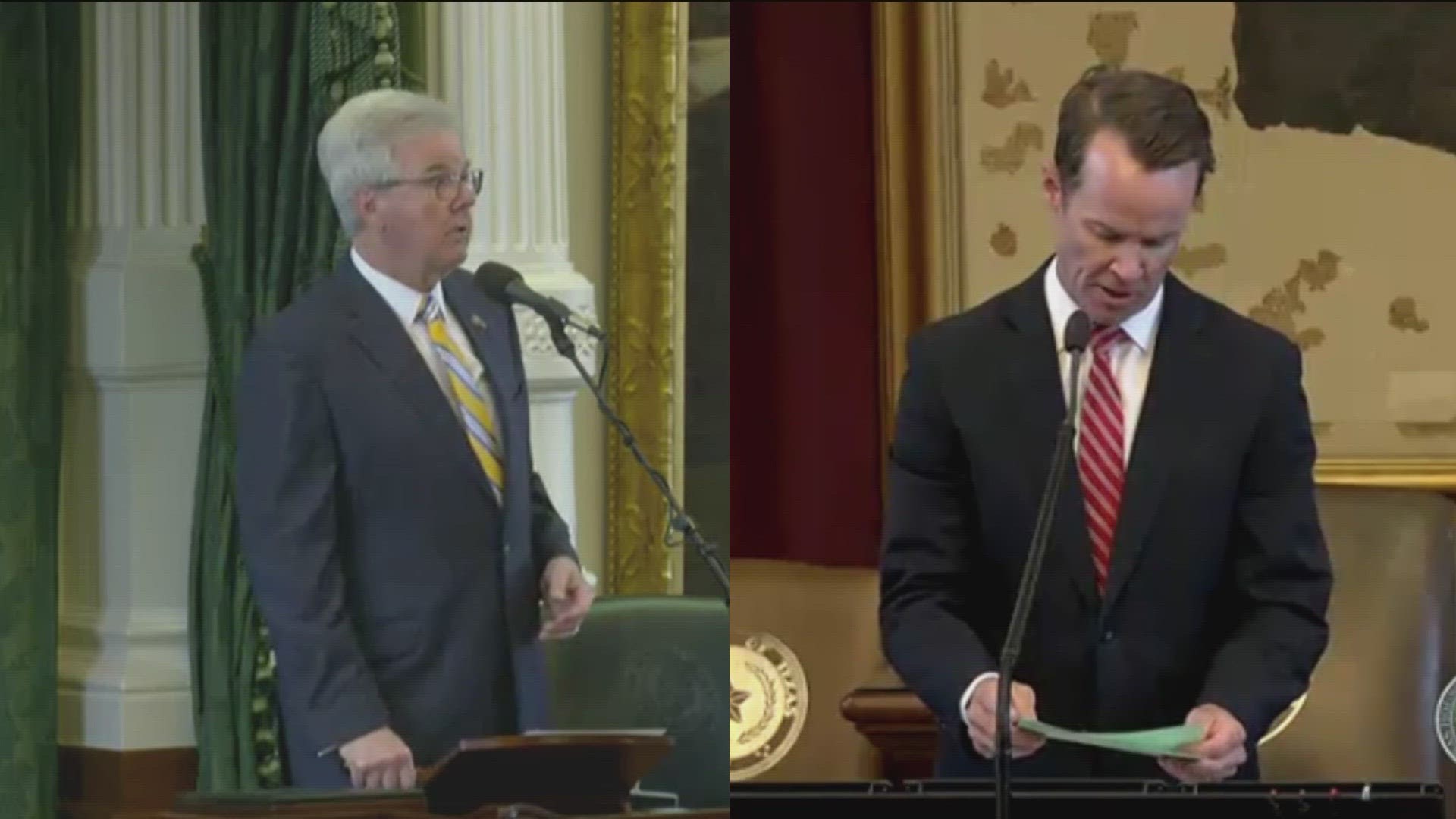AUSTIN, Texas — The Texas House and Senate are locked in a bitter battle over their respective plans to cut school property taxes. If you own property in the state, perhaps the biggest burning question you have as you observe this fight is: which plan would save me more money?
The answer isn't a simple one. It primarily depends on your property value but also several other factors, such as whether you have a homestead property and which school district levies your taxes.
House vs. Senate plan
The House and Senate have different approaches to lowering property taxes.
The House wants to employ a "compression only" strategy. This aims to compress, or lower, the public school district's tax rate by $0.162. This relief would be across the board and affect all property owners – homestead properties, rental properties and commercial properties alike.
The Senate wants to use both compression and an increase to the homestead exemption. The Senate plan would compress the tax rate by $0.10 and the homestead exemption would increase from $40,000, where it stands now, to $100,000. Because of this strategy, owners of residential homestead properties get a larger share of the savings.
The Senate plan makes other changes as well, including lowering the school collection limit rate (the amount school districts can raise tax revenue year over year without asking voters for approval), increasing the franchise tax exemption for businesses and making supplemental payments to teachers over the next two years.


Example case: Austin ISD
According to the Travis Central Appraisal District, the median taxable value of a homestead property in Austin ISD in 2023 is $464,281. That amount includes the current $40,000 homestead exemption. With the current Austin ISD tax rate of $0.9966 per $100 of value, that homeowner would pay $4,627.02 in taxes.
Under the House's plan, Austin ISD's tax rate would drop to $0.8346 per $100 of value – amounting to a tax bill of $3,874.89 and a savings of $752.14 from the current tax.
Under the Senate's plan, the tax rate would drop to $0.8966 and the homestead exemption would increase by $60,000 – dropping the taxable value of the median home to only $404,281. The tax bill on this home would drop to $3,624.78 – a $1,002.24 savings from the original.


The Senate plan saves the owner of a median-valued homestead property $250 more than the House plan.
But as the value of the home changes, so do the savings.
A below-median value home would get even more savings under the Senate plan.
At $250,000 in value – the Senate plan saves a homeowner $787.96, while the House plan saves only $405 – a difference of $382.96.


As the value of the home increases, the gap between the two plans shrinks.
At around $850,000 of taxable value, the House and Senate plans offer roughly the same amount of savings. Beyond that, as a home's value approaches $1 million or more, the House plan offers more savings.
Funding and voter approval
Both the House and Senate plans are funded by the state budget, passed in the regular legislative session this spring. Lawmakers set aside around $18 billion to cover some form of property tax relief. It's now up to the House and Senate to decide what form that relief will take.
Some aspects of each plan would also require approval from Texas voters in a November 2023 election. The Senate plan would require voter approval for the increase to the homestead exemption as well as the supplemental payments to teachers. Both plans would require voter approval on a temporary provision related to the transition out of the respective two-year tax savings plans at the end of the biennium.

